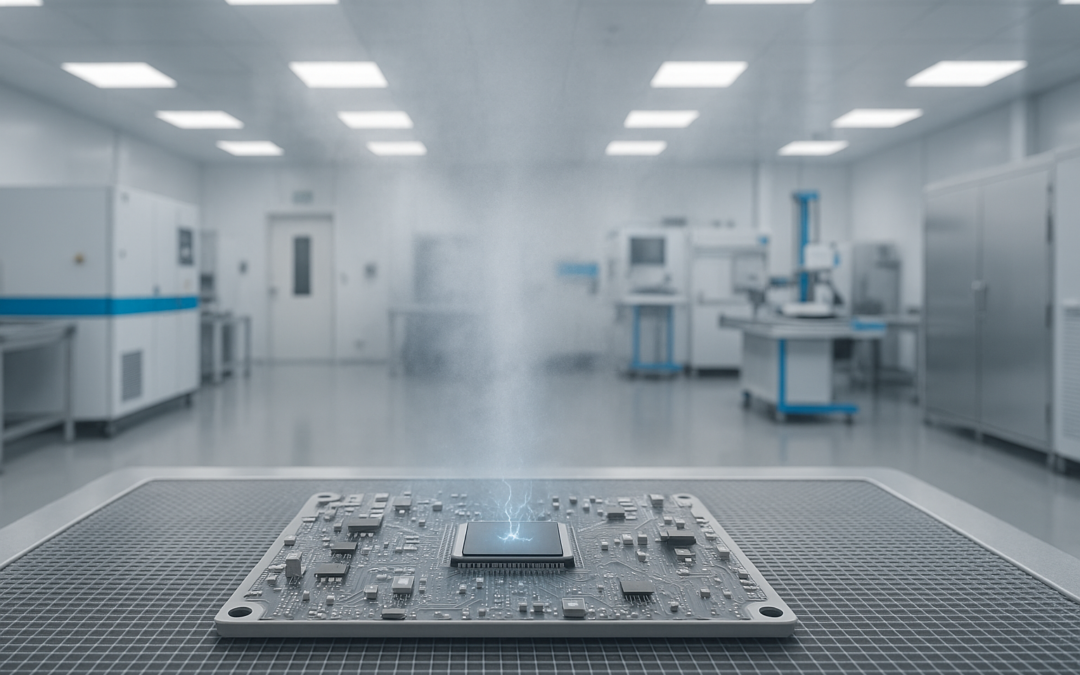While you may not immediately notice it, there’s a major threat to your workplace in the air: Dust. This once became such a problem in the workplace once, the EPA had to create hazard standards so all industries would control air particles. However, it’s not easy to suppress dust since it can become overly prevalent in many industrial settings.
Perhaps you remember having to invest in bag houses or electrostatic precipitators to control the dust in your work environment. In fact, these are still in use. It’s not to say they aren’t extremely expensive, bulky, and usually need considerable maintenance.
Only a unique humidification system properly controls dust to EPA standards. The problem is so many humidifiers on the market are expensive and need excess maintenance as well. Others just aren’t energy-efficient enough while leaving condensation on surfaces.
At Smart Fog, we’ve designed humidifying systems that work much differently. Let’s look at how much of a risk dust is to worker health and how we’ll fix it for you.
Common Short-Term Dangers of Dust
You maybe didn’t know the sources for dust are tremendous. It all depends on the type of industry you work in, though all dust can cause short-term health dangers to your workers. They can even end up getting long-term illnesses when exposed to excessively dusty surroundings for years.
One of the most common and immediate health signs is respiratory issues in your employees. Small dust particles move into the nose and pharynx, hence causing issues with breathing. If your workers already have problems with asthma or susceptible to pneumonia, this could become very serious.
You’ll start to notice some of your employees having to skip work due to excessive coughing. Regardless, problems can equally happen at your work site.
Other Short-Term Dangers
Workplace safety experts note dust clouds can sometimes cause explosions, leading to objects flying and potentially injuring workers. While this is quite rare, it gives a reminder about how dangerous dust can become.
Outside of this, employees may notice skin and eye problems from dust exposure. You may write this off as being merely allergen problems. Yet, dry skin and irritated eyes on a regular basis are probably signs of poor working conditions.
Our Smart Fog Fogger is the answer to this with low water and energy consumption to save you money. Plus, we use small droplet size technology to ensure dust becomes thoroughly eliminated.
While our technologies help dust suppression for short-term problems, what about long-term illness risks?
Long-Term Dangers of Dust
Not doing anything about controlling workplace dust may lead to your workers breathing dust for decades to come. After breathing it for years without protection, they could develop lung cancer, asthma, or possible skin cancer.
Protective clothing can sometimes help, though you need to tackle the dust head-on with the proper equipment.
We’ll test to see how bad your dust is in your workplace and fix it immediately with our fogger. One thing you’re going to like is you won’t need constant maintenance since our fogger system has a large orifice to prevent clogging.
In addition, we’ve avoided using moving parts in our equipment to eliminate worry about them breaking down earlier than you expected.
Again, our small water droplet technology guarantees you’ll knock all small dust particles out of the air. It’s just one example of the innovations we’ve provided in our foggers and all humidifier products.
We’re able to do custom installations (including in-duct systems), so you meet the EPA standards expected of you.
Dust Suppression and Disease Control
Humidifiers are useful not only for keeping the air clean and free of particles of dust, but can also be used for suppressing other airborne matter such as bacteria, Virus,and other air born diseases which can otherwise ruin food, produce and vegetable while it is in cold storage, ripening rooms or during transported. Humidifiers can be automated extensively, so that any change in humidity is quickly adjusted so as to keep the levels in a closed environment constant.
Dust suppression is not the only thing humidifiers help with. Disease control is another area in which humid are is essential, just listen to what Mayo Clinic has to say about this:
“Dry sinuses, bloody noses and cracked lips — humidifiers can help soothe these familiar problems caused by dry indoor air. Humidifiers can also help ease symptoms of a cold or another respiratory condition.
But be cautious: Although useful, humidifiers can actually make you sick if they aren’t maintained properly or if humidity levels stay too high. If you use humidifiers, be sure to monitor humidity levels and keep your humidifier clean. Dirty humidifiers can breed mold or bacteria. If you have allergies or asthma, talk to your doctor before using a humidifier.”
From this we can see that clean, humid air is great for keeping air and disease at bay.
Contact us to learn more about how bad dust is and the technologies we’ve developed to control it better than anyone else.





